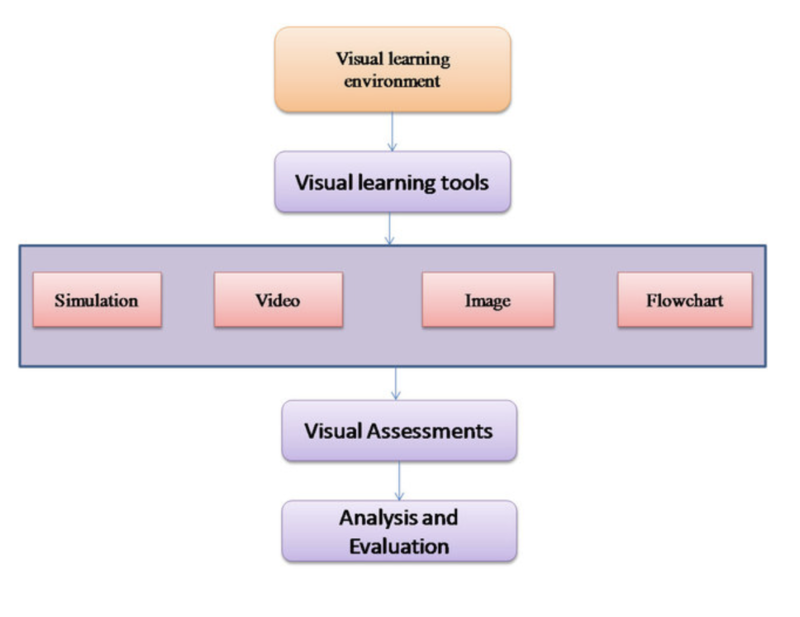e-Learning Ecologies MOOC’s Updates
Visual Learning
Visual learning
Visual learning is defined as “the assimilation of information from visual formats”.
Visual learning helps students develop visual thinking, which is a learning style that helps the learner better understand and retain information by linking ideas, words, and concepts with pictures. Visual aids are important because displaying visual elements maintains the attention of the learner and makes displaying information more interesting. Visual information is presented in different formats, such as images, flowcharts, diagrams, video, simulations, graphs, cartoons, coloring books, slide shows/Powerpoint decks, posters, movies, games, and flash cards.
Visual learners like to use pictures, colors, pictures, and maps to organize and communicate information
others.
Fig1: Visual learning strategy
Figaure1 shows the visual learning strategy, the teacher chooses a lesson in visual learning and learning tools corresponding to the visual materials. After introducing the chosen lesson, the teacher moderates a discussion and asks for questions and get student feedback, until all objectives have been achieved. The teacher distributes the visual task. Then the teacher analyzes and summarizes the students' visual learning skills.
The six methods of visual learning:
1. Investigate- Seeing through the eye of a camera’s viewfinder can often help focus attention and clarify thought. Investigating assignments ask participants to use words and images to learn about and better understand the world. Clustering, listing, visual-thinking maps, and other prewriting activities are examples of explorational methods of communication
2. Chronicle- Chronicling assignments freeze moments in time for example documentary imagery and descriptive writing.
3. Express- Expressive works reveal thoughts and feelings and translate the abstract to the concrete.
4. Communicate- Assignments in communication are designed to share information with others.
5. Inspire- Use images to influence others as a tool for inspiration.
6. Envision- Use the power of your imagination to envision something new.
Reference:
Raiyn, J. (2016). The Role of Visual Learning in Improving Students' High-Order Thinking Skills. Journal of Education and Practice, 7(24), 115-121.



جميييل
ماشاء اخت ليلى مجتهدة